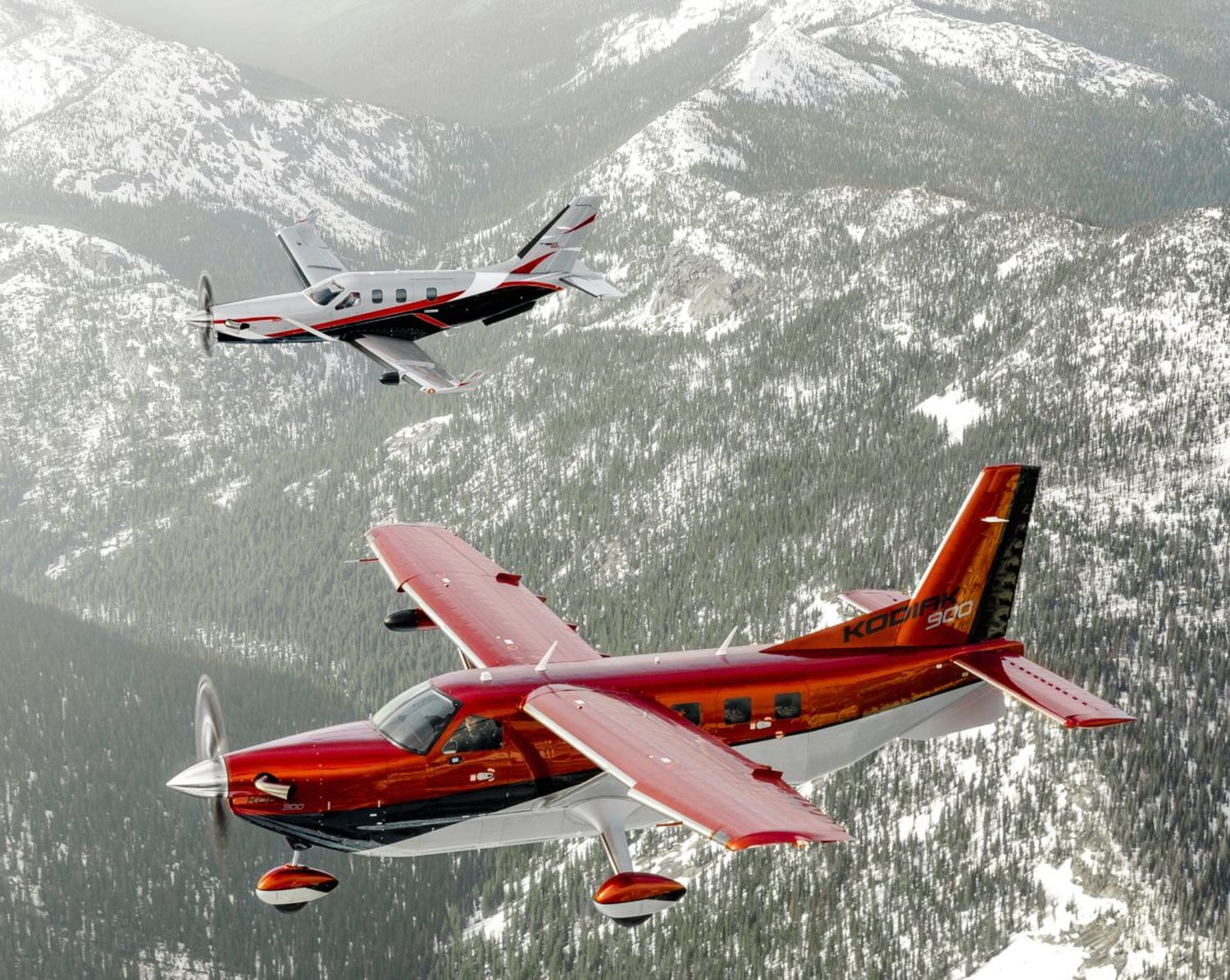Oshkosh 2022: Daher introduced its new Kodiak 900 utility aircraft
Daher introduced the Kodiak 900, the largest and fastest version of its light utility aircraft family, during the Oshkosh AirVenture. This new model, which joins the TBM 910 and TBM 960 family, completes the company’s aircraft lineup.
The Kodiak 900 inherits the STOL qualities of the Kodiak 100 but extends the fuselage by 3.9 feet (1.2 meters), providing more space for passengers and cargo. In addition, the model features an increased cruise speed of 210 knots and a higher payload, offering a maximum range of 1,129 nautical miles. Fuel consumption was also reduced by nine percent.
Development of the Kodiak 900 began in 2016. To date, three test aircraft have been built: a static aircraft for structural testing, a prototype for flight testing, and the first production aircraft for FAA certification. The maiden flight of the Kodiak 900 took place on February 28, 2020.
Nicolas Chabbert, senior vice president of Daher’s aircraft division, announced during the model’s introduction that «this is another step in our commitment to enhancing the sustainability of general aviation. The Kodiak 900 truly stands alone in its category: a highly versatile non-pressurized utility turboprop aircraft that can carry impressive payloads while flying comfortably at 210 KTS.»
The model received U.S. Federal Aviation Administration certification last July 20, and deliveries will begin in 2023. Production of the Kodiak 900, along with the Kodiak 100 Series III, takes place at the facility in Sandpoint, Idaho, U.S.A. «Today’s unveiling underscores Daher’s strong commitment to constantly improving its aeronautical product line,» added Daher CEO Didier Kayat. «It follows our launch of the latest member of the TBM family -the TBM 960- just three months ago.»
New cabin
The Kodiak 900 provides a total cabin volume increase of 20 percent, to 309 cubic feet, and features an all-new interior. According to Daher, it combines the luxury and refinement of the TBM with the ruggedness of the Kodiak. The interior can be arranged in multiple configurations. The Summit+ seats – also used in the new Kodiak 100 interior – can be removed for maximum cargo space. Each seat now includes USB-A and USB-C ports, LEMO headphone jacks, cup holders, and phone holders.
In addition, the new seats come with quick releases. These allow them to easily slide into rails or be removed without the need for tools or specialized equipment. Each seat is reclining and features two armrests and a headrest. The cab retains the versatility of the Kodiak 100, and the three doors allow the full cargo volume to be utilized.
As for the aircraft’s interior, it can be configured with a new color palette. The seats are black, and the cabin uses black, weather-resistant carpeting, while the sidewalls, headliner, and rear bulkhead use the same composite material as the Kodiak 100. The sound insulation, meanwhile, creates one of the quietest cabin experiences for an aircraft in its class.
Structural improvements
The fuselage has been redesigned and aerodynamic improvements have been made. Changes include the replacement of the pilot’s entry step with a folding stairway and the addition of flap and landing gear fairings. Significant internal airflow optimization was also carried out, redesigning ducts, inlets, and intakes. One of the most obvious differences in the Kodiak 900 airframe is the addition of a fifth set of windows.
The use of wheel fairings is another notable visual difference in the Kodiak 900 from its predecessor. These were certified as «secondary structures» and their construction ensures that they can withstand landings on unpaved runways. The main gear fairing can be used as a step for pre-flight operations. Access doors make the tire valve stem easily accessible. This avoids removing the wheel fairings for brake and tire work.
Powerplant
The Kodiak 900 will be powered by the 900-horsepower PT6A-140A turboprop engine designed by Pratt & Whitney Canada, the gearbox housing is corrosion resistant, and the engine offers best-in-class performance. The PT6A-140A is part of Pratt & Whitney Canada’s new-generation PT6A-140 series, which has already logged more than two million flight hours.
Daher’s Kodiak 900 uses a new five-bladed, constant-speed, hydraulically driven Hartzell propeller. Its design and low rotational speed of 1,900 rpm contribute to the model’s low noise level (79.5 dB), allowing the aircraft to operate in heavily regulated areas. The Kodiak 900’s engine compartment has been redesigned to maintain the features of the 100 version. The air intake system has been optimized to lower starting temperatures, allowing the engine to be started several times per hour, an essential requirement of customers such as skydiving operators.


Comentarios
Para comentar, debés estar registrado
Por favor, iniciá sesión